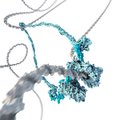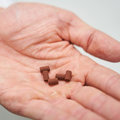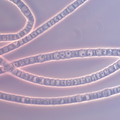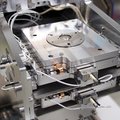Latest News
04 March 2020
Zigzag DNA

DNA in a cell can normally be compared to spaghetti on one’s plate: a large tangle of strands. To be able to divide DNA neatly between the two daughter cells during cell division, the cell organises this tangle into tightly packed chromosomes. A protein complex called condensin has been known to play a key role in this process, but biologists had no idea exactly how this worked. Until February 2018, when scientists from the Kavli Institute at Delft University of Technology, together with colleagues from EMBL Heidelberg, showed in real time how a condensin protein extrudes a loop in the DNA. Now, follow-up research by the same research groups shows that simple bundling up such loops is by no means the only way condensin packs up DNA. The researchers discovered an entirely new loop structure, which they call the 'Z loop'. They publish this new phenomenon in Nature on 4 March, where they show, for the first time, how condensins mutually interact to fold DNA into a zigzag structure.
16 January 2020
New software to better understand conversations between cells

One of the most fascinating and important properties of living cells is their capacity for self-organization. By talking to each other cells can, among other things, determine where they are in relation to each other and whether they need to turn certain genes on or off. Thus, large groups of cells are able to work together and organise into all kinds of tissues. Researchers at Delft University of Technology have now developed software that can predict and visualise conversations between cells on the basis of the molecules involved.
19 November 2019
Building a Mars base with bacteria

How do you make a base on Mars? Simple: you send some bacteria to the red planet and you let them mine iron.
11 September 2019
Cable bacteria: Living electrical wires with record conductivity

Bacteria that power themselves using electricity and are able to send electrical currents over long distances through highly conductive power lines. It almost sounds like the way we charge our TVs and refrigerators, and may seem hard to believe, but it is a recent discovery by a team of scientists from the University of Antwerp (Belgium), Delft University of Technology (Netherlands) and the University of Hasselt (Belgium). Centimeter-long bacteria from the seafloor contain a conductive fiber network that operates in comparable way to the copper wiring that we use to transport electricity. The highly conductive fibers enable a completely new interface between biology and electronics, providing a prospect for new materials and technology.
18 July 2019
Veni grant for four researchers of Applied Sciences
The Dutch Research Council (NWO) has awarded a Veni grant worth up to 250,000 euros to twelve highly promising young scientists from TU Delft, four of whom are from the Faculty of Applied Sciences. The grant provides the laureates with the opportunity to further elaborate their own ideas during a period of three years.
04 July 2019
Nynke Dekker elected as member of EMBO
04 July 2019
Teachers of the Year of AS announced

During the Science Day of the Faculty of Applied Sciences, on Thursday 27 June, Dean Lucas van Vliet announced the Teachers of the Year for 2019.
13 May 2019
Gijsje Koenderink new professor at Bionanoscience department
The Bionanoscience research department of the Faculty of Applied Sciences has appointed Gijsje Koenderink as a new professor. Koenderink currently works at the AMOLF institute, where she is head of the Living Matter department and group leader of the Biological Soft Matter group. She will start on September 1, 2019.
19 December 2018
NWO grants collaborative Cryo-microscopy development by Hoogenboom (ImPhys) and Jakobi (BN)

NWO has announced that it has decided to fund the 810 k€ collaborative project CRYO3BEAMS led by Jacob Hoogenboom (ImPhys). The project, which further involves Arjen Jakobi (BN) and industrial partners Delmic and Demcon-Kryoz, is funded within the High-Tech Systems and Materials (HTSM) Topsector call.
29 November 2018
ERC Consolidator grant for Chirlmin Joo and Pouyan Boukany

This year, two ERC Consolidator grants have been awarded to TU Delft researchers. Both these researchers work at the Faculty of Applied Sciences. Dr. Pouyan Boukany from the Department of Chemical Engineering wants to learn when, how and why metastatic tumour cells detach form a tumour. Dr. Chirlmin Joo from the Department of Bionanoscience wants to develop a new gene editing tool based on a system found in a single-celled organism.